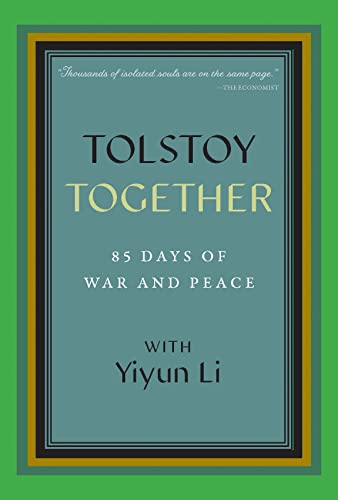When author Yiyun Li announced last year that she would lead a collective read-through of War and Peace, called #TolstoyTogether, on behalf of the literary magazine and publisher A Public Space, my first thought was: perhaps I’ll finally read War and Peace. Then I didn’t. I had already fought my battles with the book and lost, which I later detailed in an essay on my complicated relationship with the book published in Literary Hub last fall. But when A Public Space announced that it would be publishing a companion volume to Tolstoy’s masterpiece as a sort of capstone to Li’s project, Tolstoy Together: 85 Days of War and Peace with Yiyun Li, and that Li would hold another read-through this fall, I knew I had to speak with Li. (Li was awarded this year’s Deborah Pease Prize, which is given yearly at the A Public Space benefit, for “her leadership and generosity in leading us in two readings of War and Peace with Tolstoy Together.”) Perhaps I wanted to be convinced—or maybe I just wanted to hear someone who loves the book tell me all about why.
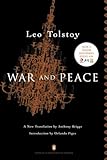 Li, it turned out, had read my piece, which she mentioned to me amid laughter during a phone conversation on Tolstoy’s book, her book, the read-through project, and more. And while I’m still not convinced I’ll ever read War and Peace, Li makes a compelling case for why you should do so. Here is her case, amid other insights.
Li, it turned out, had read my piece, which she mentioned to me amid laughter during a phone conversation on Tolstoy’s book, her book, the read-through project, and more. And while I’m still not convinced I’ll ever read War and Peace, Li makes a compelling case for why you should do so. Here is her case, amid other insights.
(This interview has been edited for clarity.)
The Millions: Leaving aside my vendetta against War and Peace, let’s talk about your love for War and Peace. The pandemic started to really set in early in 2020, and shortly thereafter, A Public Space announced that you would be doing a collective read-through of War and Peace. Tell me the backstory.
Yiyun Li: I think the lockdown started on March 13, and we started on March 18. Everybody was going into lockdown, and one day I was thinking, I’m sure everyone is going to have a little bit of a hard time just going into this uncertain moment. I myself felt very uncertain. Clearly, I’m such a nerd. I love War and Peace, and I read it all the time. I thought, maybe it’s good to invite people to read War and Peace because it’s such a long novel. It takes a long time to read. And by the time we were finished reading the novel, I thought, we’ll be done with the pandemic. That’s how I proposed the idea to A Public Space. I said, “Let’s invite people to read War and Peace with us.” We announced it like two days later, and then we started right after that. There’s really almost no backstory!
TM: You said you expected that the pandemic would be over by the time you and your fellow readers finished reading War and Peace at the pace of 10 to 15 pages a day? And now you’ve finished an encore read-through just as a new variant has arrived on the scene. What is your relationship with this novel? Why read it twice in two years?
YL: We’re still in the middle of the pandemic. That seems very much like War and Peace, right? I read War and Peace once a year, but much more slowly. I usually take six months to read War and Peace. But I don’t ask people for a lot—just half an hour of their day. So I calculated that I think if we read 10 to 15 pages, it would take half an hour. At that pace, it takes about three months. At the beginning of the pandemic, I thought that by last June, for sure, we’d be done with it.
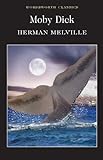
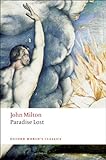
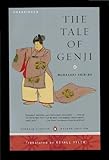 TM: Why read War and Peace once a year, rather than, say, Moby-Dick, or Paradise Lost, or The Tale of Genji?
TM: Why read War and Peace once a year, rather than, say, Moby-Dick, or Paradise Lost, or The Tale of Genji?
YL: It’s funny you mentioned Moby-Dick, because I also read Moby-Dick once a year. You’re talking to one of the nerdiest people ever. I do spend six months on War and Peace and six months or Moby-Dick, and for specific reasons. I think Moby-Dick is the epitome of metaphor, while War and Peace is almost at the other end of the spectrum, as it’s sort of the epitome of a realistic epic. So I alternate between the two novels every year, just to keep my life structured by two great books. When you reread, you start to have conversations with yourself over different readings, and on each reading, you annotate more. That’s why War and Peace. I also need a big book in my daily reading. It’s sort of like your daily bread, right? We can eat oysters and anything else, but the daily bread is War and Peace and Moby-Dick.
TM: Do you find that the structure of a big book informs your writing or your reading practice in a way that’s different from the structure of a much smaller novel?
YL: Yes. Reading War and Peace, to me, is like writing a novel. You cannot finish writing a novel in one sitting, and you cannot finish reading a novel like that in one sitting. It’s a steady pacing, to me. It’s both good for my reading and my writing as a habit, to spend the same amount of time, every day, on the same book, usually around the same time. Usually I read around 11:00 p.m., 11:30. It’s part of the scaffolding of my life at this moment.
TM: Clearly this read-through project was successful, because there is now a book about it. What was it like reading this novel with other people? How did you find the interactions with people engaging with you and your daily meditations on the novel? Which social media platforms did you find the most fruitful for conversation? Tell me about the experience of the read-through.
YL: It blew my mind. For one, just the sheer number of people reading with me. I truly thought there would be five reliable friends who would read with me, and possibly five strangers. At the beginning, I had in my head that I thought 10 people would stay from the beginning to the end with me. And in the end of the first read-through, based on how many people followed our newsletters and participated in a Zoom at the end of the read-through, 700 people came to the Zoom session, and 3,000 readers signed up for the newsletters. We also got anecdotal letters and emails from strangers.
Then there are a lot of people on Twitter. Twitter is the main platform we used socially. A Public Space helped me. I’m not on Twitter, so I used the A Public Space Twitter account to post my daily meditation. But because it’s a big novel, even if we read 10 to 15 pages a day, I might have 200 thoughts about those 10 pages, but I didn’t really have to share 200 thoughts. I could just share three. Because the readers around the world shared their thoughts. Sometimes their thoughts overlapped with mine, and sometimes they saw things that I missed.
People from other parts of the world, for instance. Someone from Sweden was reading with us and actually found some sort of ancestor in that book, a Swedish general. Then someone else said she was looking at the map—her Jewish family came from Poland—and she said, “Oh, I found my great grandmother’s village in War and Peace.” It comes from War and Peace, but it’s also just life going on for all these people, and they come to share from their lives.
TM: Do you teach?
YL: I do.
TM: We live in an era of great division, which, one might argue, is spurred on by social media. Did this exercise, which was really enabled by social media and the Internet, feel to you…more wholesome? Almost like a mega-seminar about War and Peace with 3,000 people? It sounds like you got a lot out of, well, all these student insights.
YL: Right! Except I would say it’s the exact opposite of teaching War and Peace in a classroom. When you teach a book in the classroom, there are always themes to talk about. There’s a map when you teach, and you follow that map. This is really the opposite. Everybody has reactions. There’s no hierarchy and how to read War and Peace. Someone may just be looking at the finances of the Rostov family and say, “Wait a minute, they’re losing a lot of money just by keeping 200 hounds on their estate.” And some people may be looking at geometry. There are physicists who look at War and Peace through quantum physics. Doctors, historians. It’s a book that you can read from different points of view. All of them are legitimate, and all of them are interesting to me. We’re not reading to get a consensus. We’re actually reading just to get to…whatever. And the whatever is actually quite interesting to me.
TM: It does sound like it turns the process on its head, doesn’t it?
YL: I do appreciate what you said, that people tend to be divisive on social media. People tend to be judgmental. But I like that this reading process is reading inconclusively. Nobody has the final words, because we’re just following a bunch of characters. There’s no judgmental opinions. People can like a character. People can hate the character. Someone can say, “I don’t like Andre,” on one day, and someone else can say, “I like Andre,” on another day. I like that, because nobody has final words on War and Peace.
TM: This isn’t a book about which we get to say, okay, it’s done now. We’ve learned everything we can about it. Tell me about your book. How did the decision to turn your reader of War and Peace into a book come together?
YL: When we talk about using Twitter, I have to say, I don’t tweet. So using Twitter with the word limit to express my feelings or my thoughts, my observations about War and Peace, was such a good experience, to train myself to be precise and succinct. I think the idea of the proposal came from what I learned from when I was reading with the group. I know the book well, but when I read by myself, I also take a lot of shortcuts. I don’t think through things. By reading with people, by expressing my observations, by watching people react, I realized that I have been thinking through a lot of topics about War and Peace more thoroughly.
It’s interesting, because this book, Tolstoy Together, is not only my reading journal. There were 200 to 300 people actively tweeting. It’s all these people’s reading journal through a pandemic. It’s like an oral history of a group of people reading through a period of time. So I said to Brigid Hughes, “Let’s just make it into a book.” That’s how it started. So we started to look at people’s tweets. Sometimes people echo each other. The cacophony, when multiple people are talking about multiple topics. We were thinking that we could bring these multiple voices into a book. On one side is my observation, and on the other side are the readers’ observations.
TM: How would you recommend someone read Tolstoy Together? From front to back, or to flip through?
YL: There are different ways to read it. If someone is going to read War and Peace, it’s one of the best companion books. You can just follow the reading schedule, read 15 pages and see what characters said something on that day. I know a lot of people who participated in the latest readthrough read War and Peace with Tolstoy Together as a book. But even if you don’t want to read War and Peace, the book itself is just a very interesting book about people’s minds. And to me, people’s minds are not boring at all. Even if you don’t know War and Peace, you open the book and realize people start to talk about history or the pandemic or each other, sometimes. I love the contributors. I have not met many of the contributors. But by reading through their contributions, they sort of have become characters in my head. There are characters who just want to be contrary, and in War and Peace, there are jokers, characters who just like to tell a joke. Among the contributors, there are always people who tell a good joke and who makes good comments. In the end, even if someone doesn’t read War and Peace, this is a book about all these real-life characters being obsessed with something.
TM: And we’re all that way, right? That’s one of the beautiful things about this book that I will never finish reading: the sheer spectrum of character in it. I Do you remember when you first read War and Peace? When it was first introduced to you?
YL: I remember the first reading, because last year, sometimes people said, “I cannot remember the characters.” Then at one moment, I think maybe a quarter in, someone tweeted and said, “Remember the old days, when we could not figure out who was who in this book?” I realized then that, collectively, we crossed a line: we actually knew these characters so well that we didn’t have to go look up their names. But my first introduction to War and Peace was really late. I knew Tolstoy’s work well, but War and Peace I read when I was 30, I think. It was a little confusing.
TM: I have a lot of memories around War and Peace, as you know, having read my essay. But my first significant memory about the book was right around when the Pevear–Volokhonsky translation came out, and it was making quite a stir. And at the time, I was a teenager working as a cabana boy at a beach club on Long Island—another personal experience I’ve written about in relation to a book. One day, there was this extremely tall man—who looked quite like Paul Slovak from Viking, in fact—walking down the beach with a giant copy of War and Peace. Because this is a Long Island Beach Club, and I don’t expect anybody to be reading anything like War and Peace, I went over to ask him why he was reading it, and his response was, “You know, sometimes, you just gotta finish somethin’ big.” It’s stuck in my head forever. And as you mentioned, you kind of thought that this was a book that was going to last the whole pandemic. I wonder how many people went into this project with that exact attitude in mind.
YL: Yes! I think the pandemic was a very rare opportunity, because all of a sudden, we are all isolated, and we have all this time on our hands. I have to say, War and Peace is one of those books that sometimes people just wish they had read it. But I think the invitation went out at the right time. There was this momentum: if I do this thing, the pandemic will be over when I finished. I do think that, at the beginning of the pandemic, that was very much on everybody’s mind: let’s just do this one big thing, and the pandemic will be over. But it wasn’t over.
TM: Would have been nice, though, wouldn’t it?
YL: Personally, I know several families reading together. Mostly it’s older parents with grown-up children. Someone in New York emailed me and said that the pandemic has been one moment when older parents are not visited by children, but they have to keep in touch. She said, “Really, I have nothing to talk about with my mother. But we started to read this together. So every day, we just talked about War and Peace. What a good thing to talk about!
TM: What a wonderful way to reconnect with family. Through literature, no less. Imagine, in the Year of Our Web 2021, they’re connecting through literature and not Netflix shows? Yiyun, did you just fix culture?
YL: [Laughs] I don’t know! But I know a lot of older parents reading with children. I know several families, and I have colleagues who are reading with their grown-up children. It’s something special, right? But I think that it’s one of those things that just happens. It’s a happy fluke.
TM: I would ask you if you would do it again, but since you are doing it again, clearly you would. So instead, I’m going to ask: Is Moby-Dick next?
YL: Someone did ask me! I would have said yes to Moby-Dick, but there’s one big hurdle. When I was in Iowa, Marilynne Robinson would take a whole semester reading Moby-Dick with the students. She would lecture on Moby-Dick every week. Since Marilynne Robinson has lectured about Moby-Dick for so long, I’m intimidated!
TM: Seems like A Public Space needs to give Marilynne a call then.
YL: I think that’d be good!
